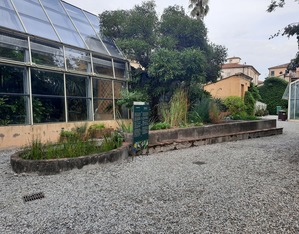Established in 1543 by Luca Ghini who had been invited by Cosimo I de’ Medici to teach botany in Pisa, the Botanical Gardens of Pisa were the first ever founded and still encapsulate a unique and unmatched combination of scientific vision and sheer beauty.
The creation of the Pisa Botanical Gardens coincided with the beginning of the study of botany, that at the time was still a branch of medicinal studies. The first Orto Botanico started as a educational facility dedicated to on-site study of plants, particularly of those defined as “simple”, intended for medicinal products. In 1591 Giuseppe Casabona moved the Orto to its present location between via Santa Maria and via Roma. An 18th-century plan shows the garden was subdivided into eight square garden beds with a sandstone basin at the centre of each one: a layout that was still underpinned by a part scientific part ornamental vision. Some partitions that changed the original layout were subsequently introduced in keeping with the development of botanical classifications. Currently the Orto is composed of various areas: the




